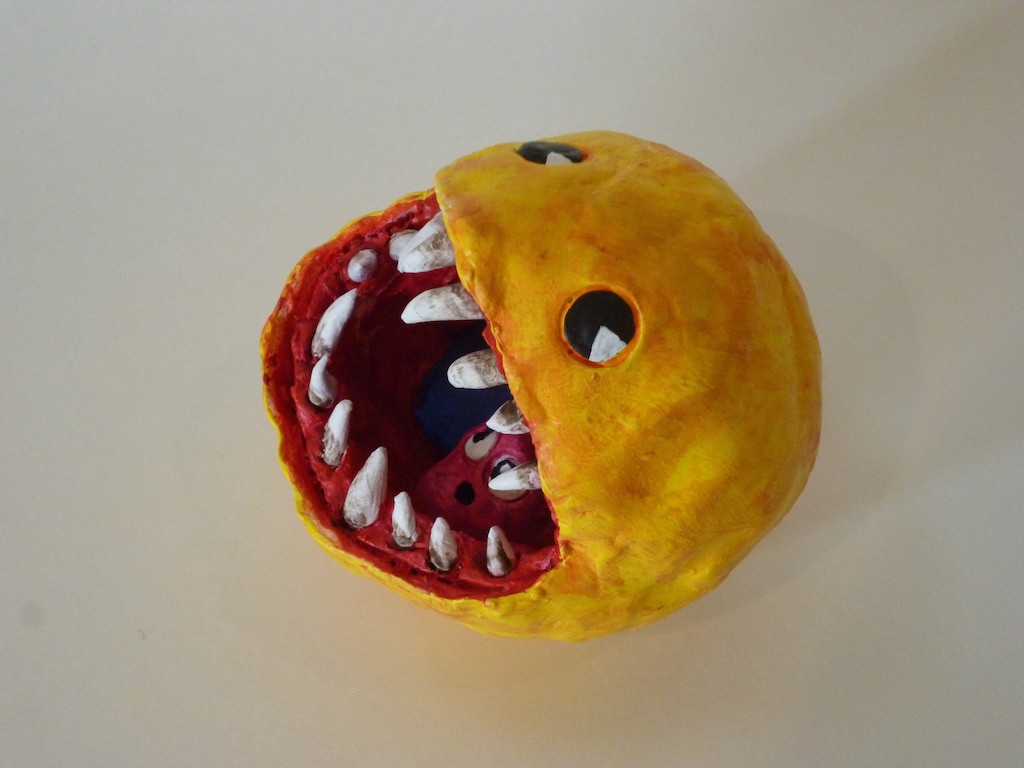Game Consumed

This blob is food. Food is good. Get the food. In a game about eating, you are naturally drawn to the most delicious-looking thing.
As games became more graphically advanced and complex, the rote simplicity of food-as-bonus-points evolved, impacting gameplay in more integral ways. In this new context, eating food didn’t just boost your score. Now, eating food could actually change the game in your favor, based on choices and actions made by the player.
I wasn’t ever a Sims person, but I can understand the appeal. I had a Tamagotchi once, for the week that was a thing in middle school. There’s something about puppet-stringing your way through the mundanities of someone else’s life that is both a temporary distraction from your own, and also very satisfying in a way that tying your own shoes never is. The stakes are nonexistent and all you have to gain is points, or stars, or strength.
Enter the new indie video game, “Don’t Starve.” The objective is exactly as the game states. Perversely enough, very few players live long enough to starve to death, because the game is strategically and psychologically complex — it involves not only real monsters but also hallucinations (because you’re hungry, remember). Some players have reported changes in their own real-life eating habits because of the starvation mindset the game puts you in.
Besides a thorough exploration of “Don’t Starve,” Chris Mohney from Serious Eats has provided a fantastic, thoughtful overview of food in video games through the years. You may say this game sounds like torture, but I say it is the torture our food-obsessed culture deserves. I’ll worry about civilization when someone invents “Don’t Forget To Shit.”
Photo: Flickr
